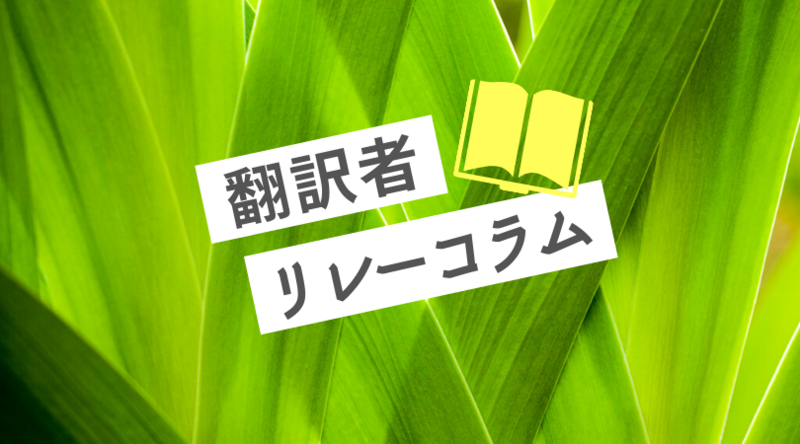
スキルアップのために必要な知識や情報、日々の仕事での失敗や成功のエピソードなどを、英⇔日翻訳者がリレー形式で執筆します。今回は英語ネイティブ翻訳者として長年活躍しているカースティン・ソーニさんが「言語のガラパゴス化」について語ります。サイマルの翻訳者による和文翻訳とあわせてご覧ください。
Avoiding Linguistic Galapagos Syndrome
1. Full capitalization of company names within text body
English-language websites and publications in Japan often use full capitals for company names to maintain consistency with company logos or the copyright registration at the bottom of webpages. This is unnecessary and results in English text that looks unnatural and is difficult to read. By contrast, a non-Japanese company such as Dell Inc. may use the fully capitalized logo "DELL", but as can be seen from its website, it generally refers to itself as "Dell" within text body.
2. Use of quotation marks for emphasis or to indicate a proper noun
Japanese quotation marks (カギ括弧)have a wider range of uses than English quotation marks, so when translating into English, it is not always appropriate to replicate the quotation marks. In particular, a proper noun in English can be identified and emphasized sufficiently by capitalization alone with no need for quotation marks, even if カギ括弧 were used in the Japanese.
The problem, of course, can be to convince clients that such usages are unnatural in English. Many Japanese companies have used capitalization and quotation marks inappropriately in their English-language publications for many years, and it is very difficult for any individual to challenge well- established habits.
However, as language professionals, we should at least be aware of these issues and persist in pointing them out to clients whenever we can do so diplomatically. Otherwise, we are allowing a form of linguistic Galapagos syndrome to occur, whereby Japan has its own unique way of writing English that is different from the norm in English-speaking countries.
【和訳】言語のガラパゴス化を防ぐ
1. 本文で企業名をすべて大文字で表記する
日本では、英語版のウェブサイトや出版物で企業名をよく大文字だけで表記します。これは、企業ロゴやウェブサイトのページ下にある著作権表示に合わせてということですが、英語ではこのようにする必要はありません。企業名をすべて大文字で表記すると、見た目が不自然になるだけでなく、読みやすさも損なわれます。一方、海外の企業では、例えばアメリカのデル株式会社は、ロゴは「DELL」とすべて大文字ですが、ウェブサイトを見ると、本文では普通に「Dell」と表記しています。
2. 引用符を強調や固有名詞に使う
日本語のカギ括弧は、英語の引用符に比べるとその用途はさまざまです。そのため、英訳をするときにカギ括弧を引用符に置き換えるのは、必ずしも適切とはいえません。特に固有名詞の場合、たとえ日本語でカギ括弧が使われていても、英語では引用符を使う必要はありません。英語で固有名詞を表記するときは、各単語の先頭文字を大文字にするだけで、固有名詞であることがはっきりするからです。
このような大文字や引用符の使い方が英語では不自然だということをお客様に納得していただくのは、なかなか難しいことです。日本の多くの企業では、長年、英文の出版物で適切とはいえない大文字や引用符の使い方がされてきました。習慣として根づいたものに対して、それは違いますと指摘することは、誰にとっても大変難しいことです。
ですが、言葉を専門に扱う私たちは、少なくともこの問題を意識し、機会あるごとにお客様に丁寧にお伝えしていく必要があります。もしそれを怠ってしまった場合、英語圏の標準とは違う日本独自の英語の書き方、つまり「言語のガラパゴス化」を許してしまうことになるのです。
(注)この記事は、2015年6月に「サイマル翻訳ブログ」に掲載されたものです。

Kirstin Soni, a British national, has over 20 years’ experience of translating Japanese to English. After completing a Japanese degree in the UK, she first translated as a Coordinator for International Relations on the JET Programme, then developed her skills at an Anglo-Japanese business consultancy in London. On returning to Japan, she worked for several years at an investor relations consultancy as a proofreader and translator, before going freelance in 2009.
【あわせて読みたい」大文字、カギ括弧についてはこちらのコラムもチェック!
として働くなら
サイマルへ
サイマル・グループでは、世界との交流を共に支える通訳者・翻訳者を募集しています。あなたのキャリア設計や就業スタイルにあった働き方で、充実したサポート体制のもと、さらなる可能性を広げてみませんか。

